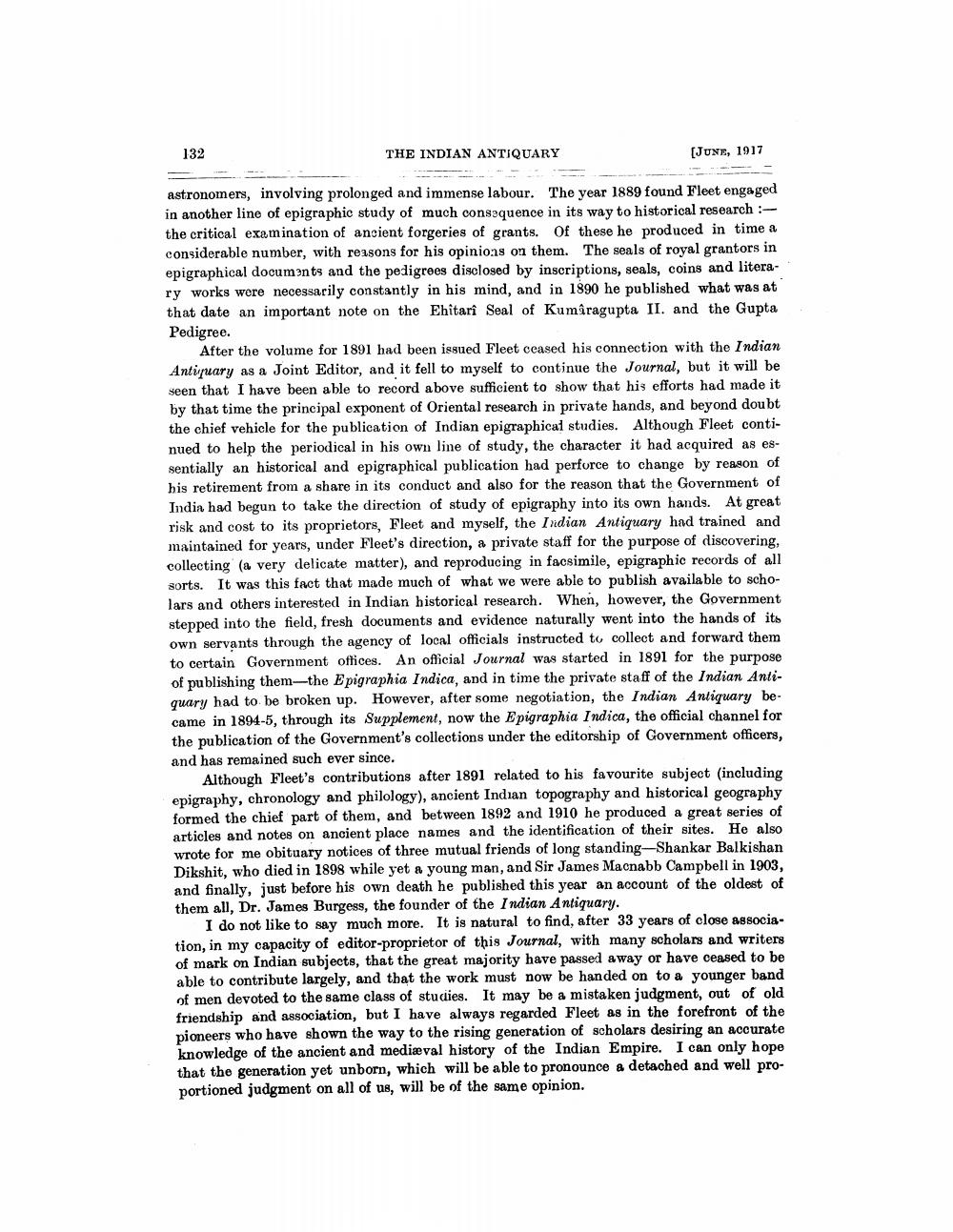________________
132
THE INDIAN ANTIQUARY
[JUNE, 1917
astronomers, involving prolonged and immense labour. The year 1889 found Fleet engaged in another line of epigraphic study of much consequence in its way to historical research :the critical examination of ancient forgeries of grants. Of these he produced in time a considerable number, with reasons for his opinions on them. The seals of royal grantors in epigraphical documents and the pedigrees disclosed by inscriptions, seals, coins and literary works were necessarily constantly in his mind, and in 1890 he published what was at that date an important note on the Ehitarî Seal of Kumâragupta II. and the Gupta Pedigree.
After the volume for 1891 had been issued Fleet ceased his connection with the Indian Antiquary as a Joint Editor, and it fell to myself to continue the Journal, but it will be seen that I have been able to record above sufficient to show that his efforts had made it by that time the principal exponent of Oriental research in private hands, and beyond doubt the chief vehicle for the publication of Indian epigraphical studies. Although Fleet continued to help the periodical in his own line of study, the character it had acquired as essentially an historical and epigraphical publication had perforce to change by reason of his retirement from a share in its conduct and also for the reason that the Government of India had begun to take the direction of study of epigraphy into its own hands. At great risk and cost to its proprietors, Fleet and myself, the Indian Antiquary had trained and maintained for years, under Fleet's direction, a private staff for the purpose of discovering, collecting (a very delicate matter), and reproducing in facsimile, epigraphic records of all sorts. It was this fact that made much of what we were able to publish available to scholars and others interested in Indian historical research. When, however, the Government stepped into the field, fresh documents and evidence naturally went into the hands of its own servants through the agency of local officials instructed to collect and forward them to certain Government offices. An official Journal was started in 1891 for the purpose of publishing them-the Epigraphia Indica, and in time the private staff of the Indian Antiquary had to be broken up. However, after some negotiation, the Indian Antiquary became in 1894-5, through its Supplement, now the Epigraphia Indica, the official channel for the publication of the Government's collections under the editorship of Government officers, and has remained such ever since.
Although Fleet's contributions after 1891 related to his favourite subject (including epigraphy, chronology and philology), ancient Indian topography and historical geography formed the chief part of them, and between 1892 and 1910 he produced a great series of articles and notes on ancient place names and the identification of their sites. He also wrote for me obituary notices of three mutual friends of long standing-Shankar Balkishan Dikshit, who died in 1898 while yet a young man, and Sir James Macnabb Campbell in 1903, and finally, just before his own death he published this year an account of the oldest of them all, Dr. James Burgess, the founder of the Indian Antiquary.
I do not like to say much more. It is natural to find, after 33 years of close association, in my capacity of editor-proprietor of this Journal, with many scholars and writers of mark on Indian subjects, that the great majority have passed away or have ceased to be able to contribute largely, and that the work must now be handed on to a younger band of men devoted to the same class of studies. It may be a mistaken judgment, out of old friendship and association, but I have always regarded Fleet as in the forefront of the pioneers who have shown the way to the rising generation of scholars desiring an accurate knowledge of the ancient and medieval history of the Indian Empire. I can only hope that the generation yet unborn, which will be able to pronounce a detached and well proportioned judgment on all of us, will be of the same opinion.




